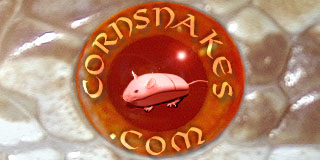WaterRaven
New member
Hey Everyone,
Long time no see!
It looks like my Shaza has some holes/broken scales on his underside. His sheds have been close to perfect, if not perfect, and yet I've noticed a crackling sound when he moves around sometimes and upon further inspection, I spotted some holes or broken edges on his tummy.
Interestingly enough, the black pine snake at my work has this as well, but more advanced. Both of them, the pine snake and my corn shed well this last time and the problem appears to be better, but I see some areas where Shaza may start to have problems again and the situation with the pine snake, though improved, is still there.
At first I saw this post:
http://www.cornsnakes.com/forums/showthread.php?t=81210
And I suspected the scale rot, however neither of them have any hint of sores, just the broken scales.
A co-worker suggests that this is from the amount of handling the snakes are getting. At work we do presentations with our animals for schools and at the museum, so she suspects constantly readjusting the snake while holding it for the kids is wearing on the scales.
I am thinking it is environmental, but neither of us are sure.
Any help here would be most appreciated! Thank you very much!
~Sarah
P.S. The enclosures for Shaza and the Pine snake are realtively dry, but Shaza has a dish he can completely submerge in as well as a humidity hide just before and during shed (which is removed once he has shed). The pines are misted every morning, but I am not sure about the humidity hides (I have just started there and am still learning the ropes of the place)
Long time no see!
It looks like my Shaza has some holes/broken scales on his underside. His sheds have been close to perfect, if not perfect, and yet I've noticed a crackling sound when he moves around sometimes and upon further inspection, I spotted some holes or broken edges on his tummy.
Interestingly enough, the black pine snake at my work has this as well, but more advanced. Both of them, the pine snake and my corn shed well this last time and the problem appears to be better, but I see some areas where Shaza may start to have problems again and the situation with the pine snake, though improved, is still there.
At first I saw this post:
http://www.cornsnakes.com/forums/showthread.php?t=81210
And I suspected the scale rot, however neither of them have any hint of sores, just the broken scales.
A co-worker suggests that this is from the amount of handling the snakes are getting. At work we do presentations with our animals for schools and at the museum, so she suspects constantly readjusting the snake while holding it for the kids is wearing on the scales.
I am thinking it is environmental, but neither of us are sure.
Any help here would be most appreciated! Thank you very much!
~Sarah
P.S. The enclosures for Shaza and the Pine snake are realtively dry, but Shaza has a dish he can completely submerge in as well as a humidity hide just before and during shed (which is removed once he has shed). The pines are misted every morning, but I am not sure about the humidity hides (I have just started there and am still learning the ropes of the place)
